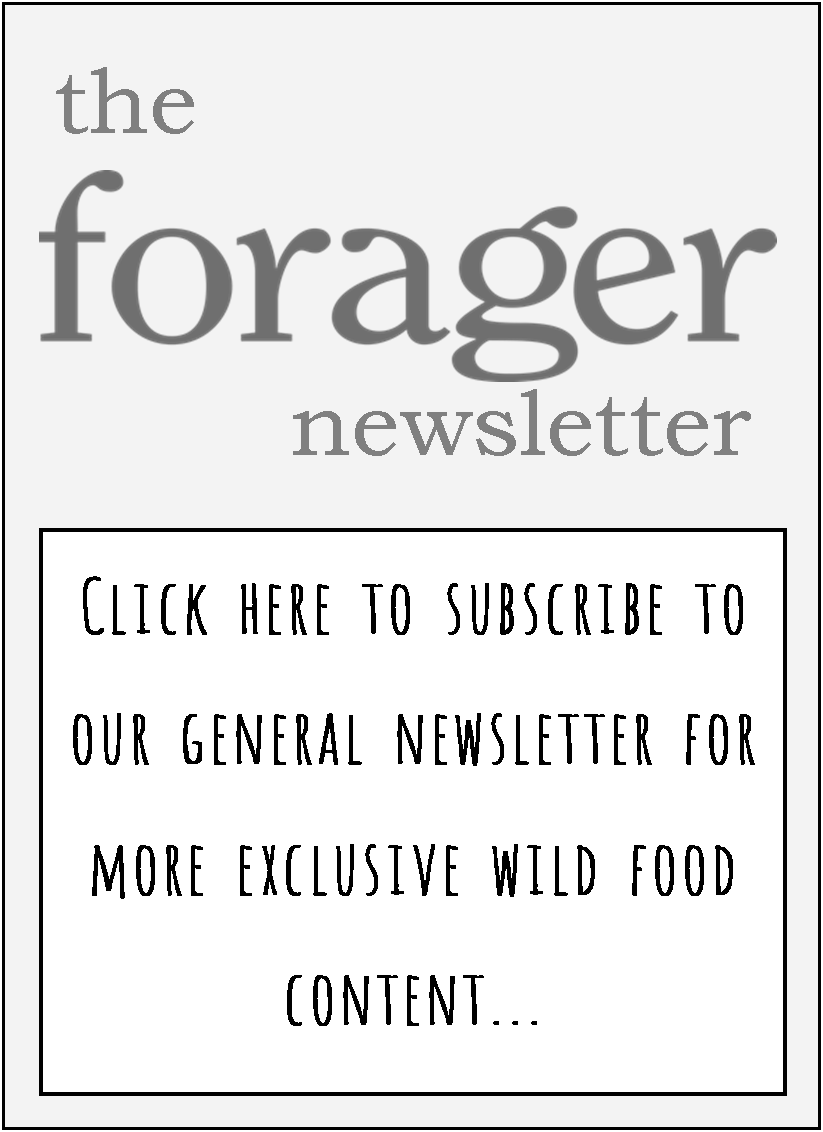For many years now our bread and butter has derived from selling wild ingredients - mostly plants - to restaurants.
This has been a very interesting and satisfying line of business, especially at a time when the British restaurant scene has been establishing a reputation for world class cuisine - a surprising development considering the very low ebb at which British food had arrived by the 1970s and 80s. Most of our customers are in London which has achieved a status as one of the leading gastronomic cities in the world in recent years. An emphasis on good quality, seasonal British produce has been a significant factor in this and of course, wild food has had an important role to play in that.
It feels good to have been a part of this, as chefs using many of the ingredients we have introduced to the British dining scene have helped familiarise the restaurant-going public with these ingredients. Beyond this, cooking competition TV programmes like Master Chef and the Great British Menu have featured many ingredients such as chickweed, wild garlic, sea buckthorn, meadowsweet and sea beet centre stage in many dishes to the point that, in this context at least, they have become almost common place. The majority of the wild produce used in both programmes has come from us.
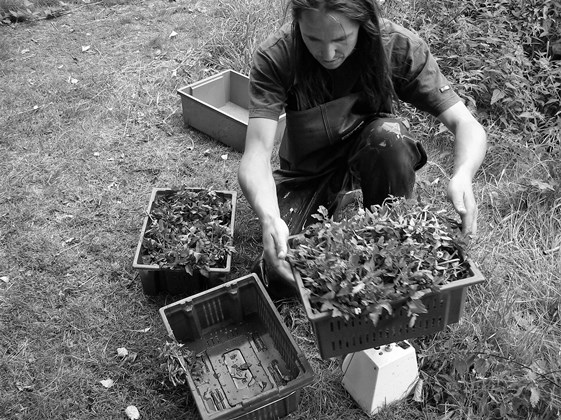
However, we have always been aware that while we are mostly engaging with high end food culture, the deeper messages about wild food (their nutritional and medicinal benefits, the wild roots of flavour, the ingenuity of deriving food resources from wild ecosystems instead of forcing them from the soil through agriculture) are not getting through to that many people. Even those who eat out a lot and get to experience several wild ingredients regularly in their restaurant meals are several steps removed from where we would like people to be. Let me explain what I mean.
For us, wild food is a very powerful way to reconnect people with land, and in doing so to provide all sorts of benefits to physical, mental, emotional and community health. It is also a way to change peoples' perspective of and engagement with green spaces; whether they be parks, rare habitats or more common place scrappy bits of land that have reverted to wildness through neglect. It provides a more earthy way to engage with - and come to value - green spaces than the mostly aesthetic experience of landscapes experienced by, for example, bird watchers or consumers of the output of the many writers and documentary makers producing books and programmes about land and wildlife. And the more deeply people engage, the more likely it is people will begin to take steps to protect wild ecosystems from being developed or degraded.
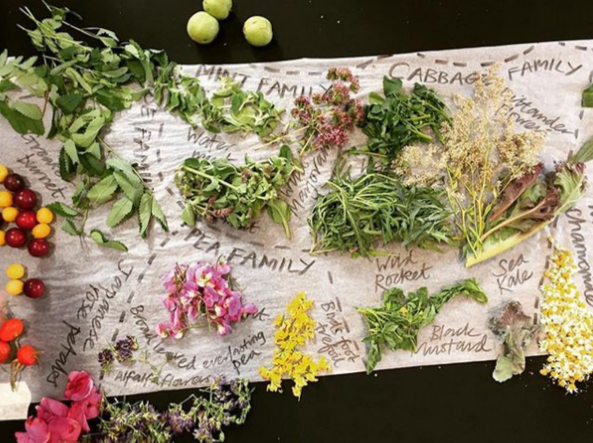 I personally have done a fair bit of teaching foraging over the past 15 years, but I often wonder what lasting effect a day's foraging has - in quite a few cases people come back months later, to re-learn most of the information. What we would hope for is to find a way to help people achieve a way of life that involves eating wild plants and other wild ingredients. I have by the way, seen more lasting benefits to people when a community group comes foraging and cooking with me together 4 times (4 seasons) for a year. I am currently pursuing this approach with two different community groups and plan to document the process.
I personally have done a fair bit of teaching foraging over the past 15 years, but I often wonder what lasting effect a day's foraging has - in quite a few cases people come back months later, to re-learn most of the information. What we would hope for is to find a way to help people achieve a way of life that involves eating wild plants and other wild ingredients. I have by the way, seen more lasting benefits to people when a community group comes foraging and cooking with me together 4 times (4 seasons) for a year. I am currently pursuing this approach with two different community groups and plan to document the process.
However, we have for several years now been thinking through how we could go about reaching many people at once, by setting up a wild box scheme. The idea being that people would receive a selection of wild ingredients, both fresh and preserved, every week, and we would guide them through how to use them using different media. The guidance bit is of course crucial, as I know myself having subscribed to an organic box scheme for many years. If you don't have adequate know how in how to use things, they simply rot and end up in, at best, the compost bin. But the potential for getting people fully on board with eating lots of wild produce week in week out was an exciting one and has meant this idea has been constantly brewing since it first came up in conversation about 6 years ago.
Of course, it doesn't get people all the way there in one go - all the way there being to a way of life that involves not just eating but directly foraging all this stuff for themselves. However, my own wild food journey tells me that it does enable people to make the most important step. Controversially, I would say that this step - learning how to prepare, cook and even to preserve wild ingredients is actually more important than learning how to forage - how to find, how and when to harvest things.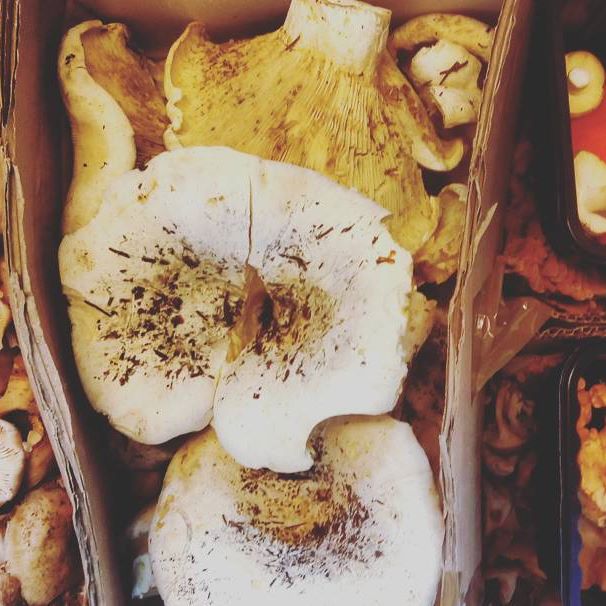
Why do I say that? Because... I did it the other way round. And as a result delayed the wild plant part of my wild food journey by nearly 20 years!
Let me explain. I have, since being introduced to them by my grandfather at age 6, been an enthusiastic forager for and consumer of wild mushrooms. This is because right after finding 3 delicious edible species with my grandfather, I sat down and ate them simply cooked and found them delicious. Mushrooms are an easy score cooking wise: just fry and eat! It's hard to get wrong and I continued to find, cook and eat them into my adult life. I added to this a variety of wild fruits and nuts over the years, whilst at the same time gradually increasing my repertoire of wild mushrooms. At around age 16, I had the opportunity to open the door into a whole new world of foraging, when I picked up a wild food book (which shall remain nameless) at a friend's house.
Armed with this I headed out and found myself some fat hen (a wild relative of spinach) and followed the recipe for it in the book. This is where I stumbled on this particular part of my wild food journey - the recipe produced a result which was bland and disappointing. Rightly or wrongly I concluded that wild plants were not nearly so rewarding as wild fruit and mushrooms. All because of a poor recipe. It was many, many years before I made another attempt to work with edible green stuff.
Now, the remedy for this was a long time coming. It arrived in the form of a 34th birthday present from my then wife-to-be Ali: Carluccio Goes Wild by the now sadly deceased Antonio Carluccio. This book contained only about 30 ingredients - and only about 12 plants among them. Partly because this small number seemed a good amount to start with, and partly because the recipe photos looked so good, we immediately got cracking trying to find and cook with and eat as many as we could.
Salads with wild sorrel, wild garlic soup, dandelion pie and nettle gnochi followed soon after, to our exquisite delight and that of our dinner guests.
The wild plant bit of my wild food journey got off to a flying (second) start, almost entirely due to the masterful simplicity of the delicious recipes Carluccio had crafted for these ingredients.
All these years later, I still think finding wild ingredients is the easy bit. My experience with seaweed was of a similar trajectory - I brought various seaweeds home many, many times but didn't eat them because I did not have a clue where to start!
So then, back to now. And the announcement this blog has been a preamble to making: this week we are launching our
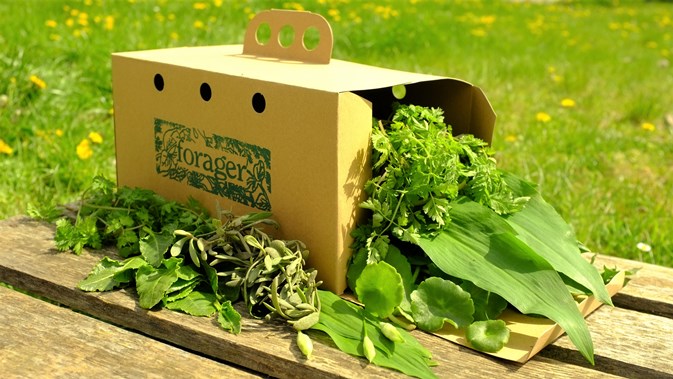
In order to make sure that doesn't happen, I need to step into the role that Antonio Carluccio played for me and help people to straight away have success cooking and preparing these ingredients and immediate delicious wild food eating experiences! So: I am busy producing videos and writing, to put my own accumulated knowledge of how to simply, easily and deliciously use wild ingredients everyday into accessible forms.
Every week we will produce a paper newsletter to go in the box with recipes and a brief introduction to each ingredient. In addition we will post recipes on our website and produce videos which we will post on our YouTube and soon-to-be launched exclusive Patreon channel. See our recent video cooking with nettles!
In essence, we are making ourselves available to hold peoples hand on the first steps of their wild food journey! Some will want to go further and do all their foraging themselves. Our box is probably the quickest route to this destination because it will enable folk to really get to know a wide range of wild produce, so identifying the same species in the field much easier (in contrast I had to learn from pictures in books) and the hurdle of how to use them well will already have been negotiated. For others the destination for now may simply be to have these nutritious, flavoursome wild foods, with the gentlest ecological footprint, in their diet. For them, just following the recipes and tips in order to use up everything in the box each week will spell arrival at their destination.
So there it is. We have just sent out a consignment of boxes to a few folk as our soft launch to enable us to iron out obvious creases in our system. Have a look at our subscription sign-up page which is now live.
This is the beginning of the journey. If you think it might be one you wish to travel with us on, please sign up and jump on board - and also please tell your like-minded friends so they can come too!
Or if for whatever reason a Wild Box is not for you - maybe because you already have access to lots of wild plants you recognise, please feel free to just dip in to the content we will be posting over the next few weeks and months, here on our Blog, Youtube, Facebook, Twitter, Instagram.

